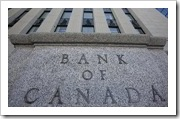
Clearing Up the Confusion: Bank of Canada Rate vs. Prime Lending Rate
Lately, there’s been a lot of misinformation floating around online, especially on social media, regarding interest rates in Canada. You’ve probably seen posts mentioning that the Bank of Canada rate is 3.00%, which might sound low and encouraging if you’re considering a mortgage or refinancing. But here’s the thing: that’s not the rate that affects your mortgage or line of credit. The rate that truly impacts you is the prime lending rate, which currently sits at 5.20%.
So, what’s the difference between these two, and why is it causing so much confusion? Let’s break it down.
Bank of Canada Rate (3.00%) – What Is It?
The Bank of Canada rate, often called the overnight rate, is the rate at which banks borrow money from each other. It’s a benchmark used by financial institutions, and while it has a big influence on the economy, it’s not the rate you’ll see when applying for loans, credit lines, or mortgages.
When the Bank of Canada raises or lowers this rate, banks follow suit by adjusting their own lending rates. But it’s not the rate you, as a consumer, borrow at. It’s more of a behind-the-scenes figure that impacts the overall economy, influencing things like inflation, economic growth, and financial stability.
Prime Lending Rate (5.20%) – This Is What Matters to You
The prime lending rate is the rate banks use to determine the interest rates on consumer loans, including variable-rate mortgages, home equity lines of credit (HELOCs), and personal loans. This is the number you need to pay attention to because it’s the rate that directly affects what you pay.
When the Bank of Canada adjusts its rate, banks typically adjust the prime rate in response, but they don’t do so at a 1:1 ratio. That’s why the prime lending rate is currently 5.20% while the Bank of Canada rate is much lower at 3.00%.
Why the Confusion?
The confusion comes from the fact that many people assume the Bank of Canada rate is the same as the rate they’ll get from their bank. When you hear that the Bank of Canada’s rate is 3.00%, it’s easy to think that this is the interest rate that applies to your mortgage or line of credit. But that’s simply not the case.
For consumers, the prime lending rate is what determines borrowing costs, not the Bank of Canada rate. Social media posts or articles that suggest otherwise are misleading and can cause a lot of unnecessary confusion.
Why Does This Matter?
Understanding the difference between these two rates is crucial because it affects your financial decisions. If you’re looking at taking out a mortgage or refinancing, it’s the prime rate that will dictate your costs, not the Bank of Canada rate.
So, while it’s great to keep an eye on economic news and be aware of the Bank of Canada’s decisions, remember that the prime rate is what directly impacts your borrowing.
What You Can Do
Before making any decisions about mortgages or loans, it’s important to be clear about the rates that apply to you. If you’re ever unsure, reach out to a mortgage broker who can help explain the details and make sure you’re working with the right information. Don’t rely on social media or headlines to guide your financial choices—always go to a trusted source.
In short, while the Bank of Canada rate gets the headlines, it’s the prime lending rate that dictates your mortgage payments and borrowing costs. Keep this in mind, and don’t let misleading information cloud your judgment. For more information to better understand all this please reach out to me at 403.875.2969.